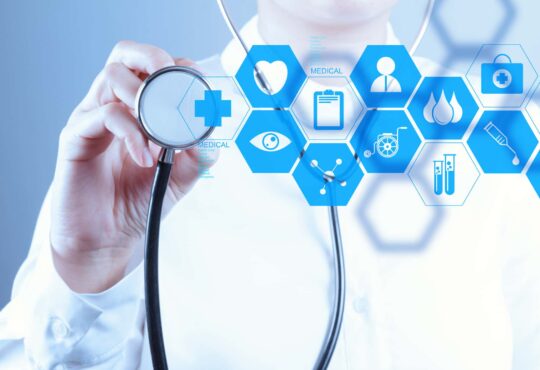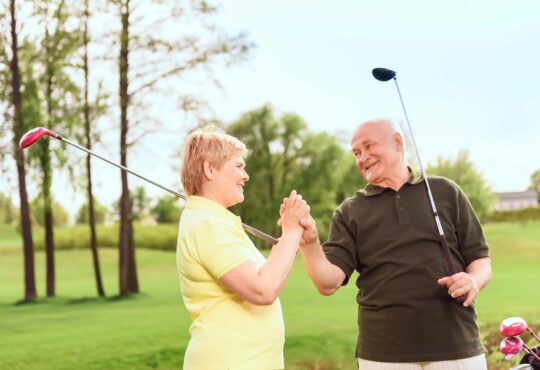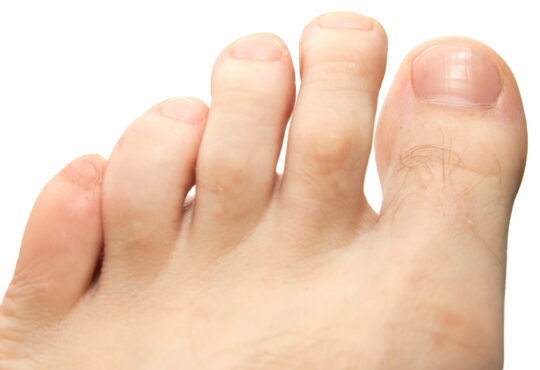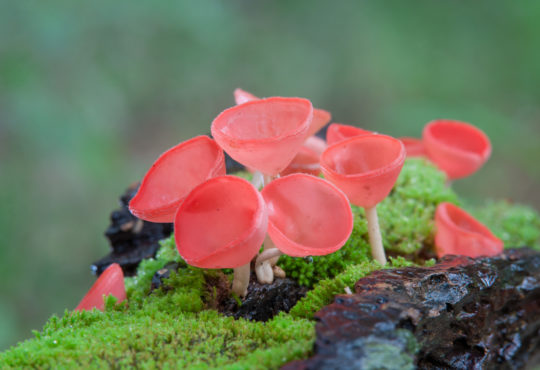Optimize the Effectiveness of Chemotherapy and Minimize Its Risks – Through Nutrition
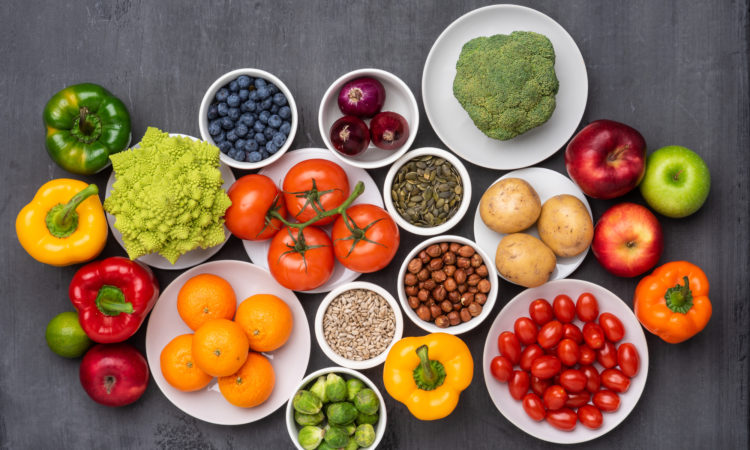
Oncologists learn how to treat cancer, not to use nutrition.
Their standard advice to chemotherapy patients: “Eat whatever you want.” They may also suggest you drink a high-protein concoction such as Boost – adding ice cream to it.
They have good reasons for this.
Chemotherapy is highly stressful. Therefore, you have an increased need for nutrition.
Depending on the progression of cancer, chemotherapy as a treatment can be much more stressful than the disease itself.
Moreover, chemotherapy often reduces appetite and can cause nausea. You need even more nutrition than ever, but you don’t feel like eating. Therefore, you’re trapped in a negative feedback loop.
Chemotherapy itself causes fatigue, and so does eating inadequate amounts of food.
And chemotherapy causes diarrhea or constipation, also limiting your ability to get the most nutrition out of your food.
Cachexia
This is the extreme weight loss cancer causes in many patients.
Cancer cells grow and divide unceasingly – and they have boundless appetites. They absorb the nutrition your healthy cells need to continue to function.
Cancer doctors must be on the alert for cachexia because it reduces the effectiveness of chemotherapy while increasing its toxicity.
By weakening patients, cachexia contributes to cancer deaths.
When you think of unhealthy weight loss and loss of muscle mass, cancer doctors – and almost all of us – fall back on what they know: calories and protein.
Calories supply energy and protein is widely associated with strength – and every chemotherapy patient needs plenty of both energy and strength.
Optimal Nutrition
Therefore, it’s correct for oncologists to encourage their patients to eat as much as they can.
But nutritional science today is far more sophisticated than simply “calories and protein.”
Because they are able to force down only limited amounts of food, chemo patients need to optimize their nutritional intake.
That means eating nutritionally dense foods, not ice cream or other junky, processed foods.
It’s Not Your Genes, It’s What You Eat
A large body of research says diet and other lifestyle factors play an enormous role in increasing or decreasing the risk for cancer.
The medical establishment wants you to believe it’s all genetic, but the reality is more complicated. If it were all genetics, all cancer-family members would get it, but not anybody else.
The Cancer Genome Atlas thought it would soon isolate the genetic cause of cancer. Instead, it’s documented enough cancer DNA to fill 530,000 DVDs – with no one simple “cause” insight. It’s found “cancer” is not one disease, but hundreds.
This is a complicated subject, and far from accepted, either by the public (who wants permission to eat whatever they want) or doctors (who don’t want to give up their own unhealthy diets).
The good news is since President Nixon declared the War on Cancer, the death rate is down 25%.
But once a patient reaches the stage of cancer where it’s diagnosed and chemotherapy has been prescribed, nobody can give guarantees about long-term survival.
Optimizing the quality of nutrition – not just “protein and calories” – can only help, not hurt.
What is Chemotherapy
It’s one of the three primary treatments for cancer. The other two are surgery and radiation.
Surgery goes back to 3,000 B.C. with the ancient Egyptians.
Radiation began in the early 20th century.
Chemotherapy started at the end of World War II, thanks to the study of poisonous mustard gas – sulfur mustard and a derivative, nitrogen mustard. Science has moved on to more sophisticated poisons, but a few mustard derivatives are still in use, including the drug Mustargen (mechlorethamine).
The basic concept is to give the patient a poison that kills the patient’s cancer cells faster and more effectively than it kills the patient’s healthy cells.
That’s the goal – kill cancer faster and more effectively than you kill healthy cells.
But – notice – healthy cells still die, which causes the painful side effects of chemo, including nausea and loss of appetite.
These days, chemotherapy agents are more targeted and more sophisticated than ever before. They go after your body’s fast-multiplying cells. This includes all cancer cells, but also some noncancerous cells as well. Hair follicles multiply quickly, for one example, and that’s why many chemo patients lose their hair.
These days, doctors are also beginning to use drugs that even more effectively target cancer and not the patient’s healthy cells.
These include immune therapies and monoclonal antibodies.
Eventually, I believe, science will come up with cancer treatments that are highly effective at targeting cancer cells while leaving healthy cells alone. In the future, oncologists will fight cancer with a laser rifle, not a shotgun.
This promises effective cures with minimal side effects.
However, that’s not today’s reality. Right now, we all fear a cancer diagnosis, and with good reason.
Still killing just under 600,000 Americans, it’s been our second-largest cause of death – just behind heart disease and cardiovascular problems – for decades.
If current rates continue, one out of every two American women and one out of every three American men will develop cancer in their lifetimes.
Treatments for cancers vary depending on the type of cancer and its progression, but chemotherapy is still the best treatment available for most cancers. Therefore, experts predict the need for chemotherapy will increase 50% by 2040.
Doctors Want You to Maintain Both Weight and Muscle Mass
This results in fewer breaks in your treatment, a more effective response to the chemotherapy, less fatigue – and less chance of cancer recurrence.
Principles:
* If your appetite is reduced, eat four to six smaller meals per day. Three meals is normally enough for healthy people with healthy appetites, and better for maintaining lower levels of blood sugar. But chemo patients need to take in as many calories as possible.
* Chew every bite well, so you get the most nutrition from it.
* Consume plenty of liquids. Doctors recommend 2-3 quarts per day, to protect your kidneys and prevent dehydration.
This is a lot, but you don’t have to drink water until you float away. Soups are great, but buy brands with limited amounts of added sodium. Smoothies made from greens and fruits work fine and maybe a lot easier to gulp down in the large quantities you need.
* Limit caffeine, because that takes water out of your body.
* Eat what you feel like. If that’s breakfast food for dinner, fine.
* Always keep your snacks and your drinks near you, so you can easily reach out and grab them.
Suggestions:
1. Vegetables and fruits are important to consume in quantity, especially those high in flavonoids and antioxidants. The more color, the better – iceberg lettuce is almost valueless. If eating so much is difficult, throw them into a blender and make as many smoothies as you can drink.
Vegetables and fruits are high in water, so they go a long way toward meeting your fluid requirements, even if you eat them rather than blend them into a smoothie.
2. Potatoes are high in calories, but eat the skins as well, for the most vitamins and minerals.
3. Although high in nutrients, most fruits and vegetables are low in fat, and – therefore – low in calories. The big exception is the avocado.
Therefore, add some avocado to your salads and smoothies every day. The easiest way is not to wrestle with raw avocados, but to buy pre-prepared guacamole in your supermarket.
The avocado fat will also help you absorb more of the vitamins in the vegetables you eat with it.
4. Nuts are almost ideal. They’re high in antioxidants to protect your healthy cells from chemo treatments. But, unlike most fruits and vegetables, they’re high in both protein and fat.
They give you both strength and energy.
Walnuts are especially healthy because they contain ALA, the precursor to omega-3 fats.
Besides, nuts are made for snacking. Even in-between 4-6 small meals per day, you can grab a bag of mixed nuts and eat some while watching TV.
5. Beans go down easily and are also high in protein and calories.
Buy a can of (low sodium) red or black beans, and add them to your soup, salads, and smoothies.
Because they’re almost tasteless, most chemo patients should tolerate them well – and, I repeat, they’re high in both protein and calories.
Red and black beans are also high in antioxidants, so buy them instead of white beans.
But they can be difficult to digest, so be careful. Start out small, and work up to larger daily portions.
6. Whole grains are also high in protein, calories, and nutrients.
Oatmeal is another highly nutritious but bland meal it’s hard to imagine anyone not being able to tolerate if they can eat at all. But use soy or nut milk, not cow’s milk. Lactose can be hard to digest. Most adults in the world can’t digest lactose at all.
To boost the antioxidant power and make the oatmeal fun to eat, add a cup of fresh or frozen blueberries. Then sprinkle on a little cinnamon and cloves if you can tolerate their tastes.
Bread might be more difficult for some people to tolerate. But, for an easy way to consume whole wheat, just boil whole wheat spaghetti noodles. Eat with spaghetti or Picante sauce and canned mushrooms (they’re also high in protein).
If you can eat whole wheat bread, make a peanut or almond butter sandwich. Peanut and almond butter are high in healthy fats and protein.
Brown rice and quinoa are also healthy and bland foods you can add to almost anything else, including tomatoes, tomato sauce, mushrooms, and steamed vegetables.
7. Sip water throughout the day to get the fluid you need. If it’s easier for you, suck on cubes of ice.
8. Avoid animal sources of protein that have been processed or cured. The World Health Organization classifies processed meats as a Class 1 carcinogen.
Therefore, avoid:
* Bacon
* Lunch meats
* Ham
* Sausage
* Hot dogs
* Salami
* Chunks of restaurant chicken (I won’t specify brand names, but anytime you buy chicken that’s no longer on the bone, it’s processed food.)
9. Feel free to alter food textures that bother you
That may include throwing foods into a blender, even soups.
Have fun experimenting with combinations of greens, other vegetables, and fruits.
Use only the edible parts of the fruits and veggies. Your blender may be strong enough to grind an avocado seed or orange peels, but is your stomach strong enough to digest them? If you wouldn’t eat it whole, don’t add it to your smoothie.
10. Avoid highly processed carbohydrates
These include anything with white sugar, commercial oils, and white flour.
These foods contain almost no nutrition. Most doctors will not try to forbid them because – if nothing else, they contain calories.
Therefore, you should avoid cake, cookies, doughnuts, candy, white bread, and so on.
Does Sugar “Feed” Cancer?
There’s no simple answer here. All the cells of your body use sugar in the form of glucose for energy. And they do so preferentially. That is, if glucose is available, that’s what they want.
Also, your body can manufacture glucose by breaking down stored fat cells and protein. If you stop eating all carbohydrates, that’s what it does.
Therefore, you cannot “starve” cancer cells by not eating sugar and other carbs.
And your cells can also use fat for energy. In fact, cancer cells love fat because fat is more densely packed with energy. For every 4 calories, you get from sugar, you get 9 calories from fat.
None of that means you should consume high levels of sugar, though, especially highly processed carbohydrates.
They raise your insulin levels, and your Insulin-Like Growth Factors (IGF-1).
What do growth factors do?
They trigger growth, of course.
What do cancer patients NOT need?
More growth, of course. Tumors are dangerous because cancer cells grow out of control. More growth factors make that worse.
Therefore, you want to consume carbohydrate-rich foods that are slow to digest. That is whole grains, beans, fruits, and vegetables.
They supply the glucose and calories you need for energy – without the excess sugar to form growth factors that encourage your cancer to grow.
Exercise is also good for limiting insulin resistance, blood sugar levels, and IGF-1, so take walks and get as much daily exercise as you’re physically capable of performing.
It may sound strange, but physical activity helps you manage the fatigue chemotherapy causes.
Yellow Onions Lower Blood Sugar in Chemo Patients
Eating yellow onions lowered blood sugar levels and insulin resistance in breast cancer patients undergoing chemotherapy by the drug Doxorubicin. Doxorubicin itself contributes to insulin resistance. Therefore, in one study, doctors had 56 patients randomized to eat either 1/3 of a yellow onion or one entire yellow onion for 28 days – while receiving chemotherapy. At the end of the study, the blood sugar and insulin resistance of the 1/3 onion patients went up. But levels for the entire onion group went down.
Even if you’re not on Doxorubicin, it’s a good idea to eat a whole onion every day.
Preventing Cancer Metastasis
Most cancer patients don’t die from the primary tumor, but from the disease spreading through their body. Metastasis is responsible for around 90% of cancer deaths.
That means most cancer patients would be better off living with the tumor instead of using chemotherapy to attack it – if only they could be guaranteed it wouldn’t metastasize.
Chemotherapy, therefore, is not just a quest to kill more cancer cells than healthy cells but to kill them before they spread to other parts of your body.
The 5-year survival rate for women with local-only breast cancer is over 98%. But, for women whose breast cancer has metastasized, the survival rate is just 27%.
And, unfortunately, chemotherapy itself can contribute to increasing the threat of metastasis. That happens because chemotherapy changes the biochemical microenvironment around the tumor.
For years, medical science did not know what causes metastasis. However, years ago, researchers identified cancer tissues that initiate metastasis. And they express high levels of the fat receptor CD36.
This means the saturated fat palmitic acid boosts the potential of CD36 to initiate metastasis. Palmitic acid is most concentrated in meat and dairy foods. However, you also find it in junk and processed foods made from palm oil. It’s also in cocoa butter and olive oil.
Although it may not be the full story for all cancers, CD36 does appear to strongly drive the risk of metastasis, including in breast cancer, prostate cancer, and ovarian cancer.
The energy stored in fat allows cancer cells to spread to other parts of the body, so they can anchor themselves in another organ.
Therefore, I strongly suggest you eliminate saturated fat – which comes from animal and dairy foods, plus coconut oil – from your diet.
A meta-analysis was done of related studies on the connection between saturated fat and breast cancer concluded you’re 50 times less likely to survive breast cancer if you eat a lot of saturated fat.
One study compared women eating whole or skim milk. Consuming high-fat milk, but not skim milk, was associated with a higher risk of breast cancer mortality.
In another study, women who’d undergone breast cancer surgery and who ate a diet low in saturated fat had a 24% reduced rate of relapse five years after the surgery.
What about men with prostate cancer? Consuming large amounts of high-fat dairy increased their risk of dying by up to 600%.
The Food That Actually Down-Regulates the CD36 Receptor
Saturated fat up-regulates CD36, but does anything turn it off?
Broccoli.
And all cruciferous vegetables, including broccoli and broccoli sprouts, cauliflower, cabbage, and horseradish.
Studies have shown this with lung, ovarian and other cancers.
We all know how deadly pancreatic cancer is. In one study, 29 patients were given powdered broccoli sprouts daily for up to one year. Most of the placebo group didn’t survive until the end of the study, but more of the patients taking broccoli did.
Using the Spice Ginger to Counter Nausea
Ginger is a proven anti-nausea compound, so use it freely while you’re undergoing chemo.
Your local supermarket may carry ginger roots. You can buy powdered ginger root at supermarkets, Asian food stores and from Amazon.
You make a simple tea by just boiling water, then adding as much of the powder as you like.
Or add small amounts to various foods. Asians will add a chunk of ginger root to noodles and soups for flavor.
Taking Supplements While Undergoing Chemotherapy
Talk with your doctor, especially your oncology pharmacist.
For example, green tea is a healthy beverage with numerous healthy phytochemicals. However, some of them block the anticancer effects of the chemotherapy drug Bortezomib (BZM).
The herb St. John’s Wort interactives negatively with many chemotherapy drugs.
Once Your Chemotherapy Ends . . .
Clearly, the data say you should consume a diet low in saturated fat and eat plenty of cruciferous vegetables.
That will give you the best odds at beating cancer in the long run – 5 years and beyond.
NOTE: This guide is not intended as a substitute for professional medical advice. If you are facing chemotherapy, consult your doctor.
https://pubmed.ncbi.nlm.nih.gov/19190249/
https://www.medicalnewstoday.com/articles/288916
https://nutritionfacts.org/video/oatmeal-lotion-for-chemotherapy-induced-rash/
https://time.com/3968918/when-chemotherapy-does-more-harm-than-good/
https://www.cancervic.org.au/cancer-information/treatments/treatments-types/chemotherapy/side_effects_of_chemotherapy.html
https://www.youtube.com/watch?v=MNFGTRWavTI
https://www.ncbi.nlm.nih.gov/pmc/articles/PMC7358070/
https://www.ncbi.nlm.nih.gov/pmc/articles/PMC5325736/
https://www.cancer.org/cancer/cancer-basics/history-of-cancer/what-is-cancer.html
https://www.medicalnewstoday.com/articles/288916#Lung-cancer-overtakes-breast-cancer-as-leading-cause-of-cancer-death-in-women
https://www.ajmc.com/view/chemotherapy-demand-will-rise-significantly-by-2040-and-workforce-will-need-to-expand-with-it
https://www.youtube.com/watch?v=nCjQt6zmPKA
https://nutritionfacts.org/video/are-onions-beneficial-for-testosterone-osteoporosis-allergies-and-cancer/
https://nutritionfacts.org/video/what-causes-cancer-to-metastasize/
https://nutritionfacts.org/video/how-to-help-control-cancer-metastasis-with-diet/
https://www.youtube.com/watch?v=gDdmeRMn4Ik


